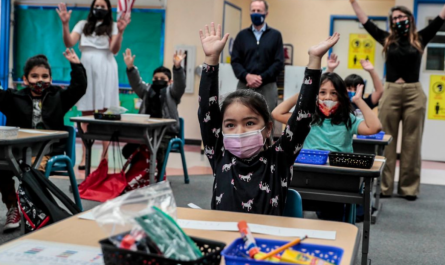Delta variant and resurgence of COVID-19 cases are forcing school administrators to come up with comprehensive strategies ahead of school reopening this fall.
Many administrators are reviewing protocols by taking parents into confidence. They are discussing preventive measures with parents and teachers. With all the stakeholders on board, schools can have a coordinated approach towards ensuring students safe return to classrooms.
As the situation returns to normal, schools will be up against a range of other challenges, such as mental health issues, bullying etc. Also, gun violence being a serious concern, the administration must be on the vigil to avert shooting incidents on campus.
Everytown Research & Policy, which tracks incidents of gun violence, says the U.S. sees “more than 3,000 deaths and over 15,000 fatal injuries because of horrifying gun violence every year,” adding that, “gun violence impacts Black and Hispanic children more than their White peers.”
According to a report by Safe and Sound Schools, a non-profit organization based out of Connecticut, “there is a significant gap between district administrators, public safety staff, teachers, parents, and students in their attitudes toward school safety.” The report claims that “students and parents are less confident than administrators in critical areas, including a 30-point gap when asked if their schools take a proactive approach to safety awareness.”
The report also highlighted a discrepancy in the level of confidence district administrators and security personnel have in tackling safety issues compared to that of students and parents. “For instance, where 86% of administrators feel prepared for an active shooter event in their district, only 51% of parents and 44% of students feel the same. Additionally, where 85% of security personnel and 87% of administrators feel prepared to handle mental health emergencies, only 44% of students and 45% of parents feel that school districts have the right resources in place.”
Here are the 5 Ways to Improve School Safety
- Physical and psychological Safety
Schools must be adequately equipped to deal with emergencies, both of natural and man-made. While some natural disasters, such as storms and wildfires, can be predicted and provide time for evacuation and following safety protocols, there are others that strike without a warning. Schools need to be prepared for both events, and staff must be trained to navigate a crisis situation through safety drills.
The mental health or psychological safety of children is as important as their physical well-being. Schools can bring in well-trained mental health professionals to help students overcome anxiety, stress, negative thoughts and other psychological disorders. This can have a positive impact on students’ academic performance as well.
- Communication channel
It is important for parents to have open and honest conversations with their children. Apart from enquiring about day-to-day activities, parents can ask them about their friends’ interactions with teachers, etc. Talking to children about appropriate behaviours, sex and boundaries prepares them to handle difficult situations and reduces the risk of abuse.
- Act together for school safety
School authorities must put in place an emergency response team to deal with any crisis. They can also bring in social workers and safety officers to work with the in-house safety team.
- Involvement of parents
Parents must be involved in decision-making processes centred on child safety. They can get in touch with the Principal and teachers to discuss safety measures implemented in schools. During parent-teacher meetings, they must also openly raise their concerns and provide suggestions on what schools can do to improve campus-based safety and security.
- Building an emergency recovery plan
Schools must have an emergency response plan to deal with issues such as bullying, violence, mental health issues, fire and natural disasters. School administrators can split responsibilities among teachers, staff and volunteers. This can ensure quick response during the time of crisis.
| What School Principal Can Do to Improve Safety School leaders can ensure the long-term safety and security of schools with collective effort. Principals can adopt the following measures in order to manage safety and build successful schools. ● Build a leadership: Create a team of teaching and non-teaching staff, along with mental health professionals, tasked with responsibilities to handle emergencies based on their skills. From data collection to analysis, they can perform their assigned roles while collaborating as a team to create a safe environment on the campus. Examining physical safety: It is a school’s responsibility to evaluate the safety of buildings and grounds The administration must ensure that the buildings meet fire and safety requirements, have accessible exit points, surveillance cameras and adequate security staff. ● Mental health: Make sure mental health professionals are providing services to students in an effective manner. ● Regular team meetings: School Principals can conduct regular meetings —once a day or twice a week —to monitor resources, and discuss ideas with staff members and teachers. The school leaders can also identify potential community partners and NGOs for assistance during a challenging time. ● Engage with parents and students: The principal should engage students and their families as partners in developing and implementing policies and practices that help maintain a safe school environment. (This school safety framework was created by the National Association of School Resource Officers (NASRO), in collaboration with National Association of Elementary School Principals (NAESP), National Association of School Psychology (NASP), and others.) |




